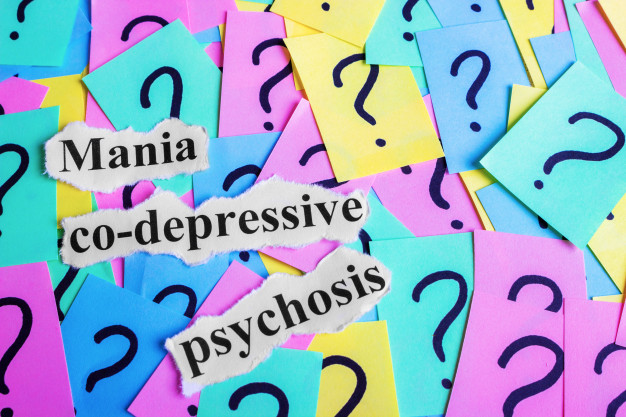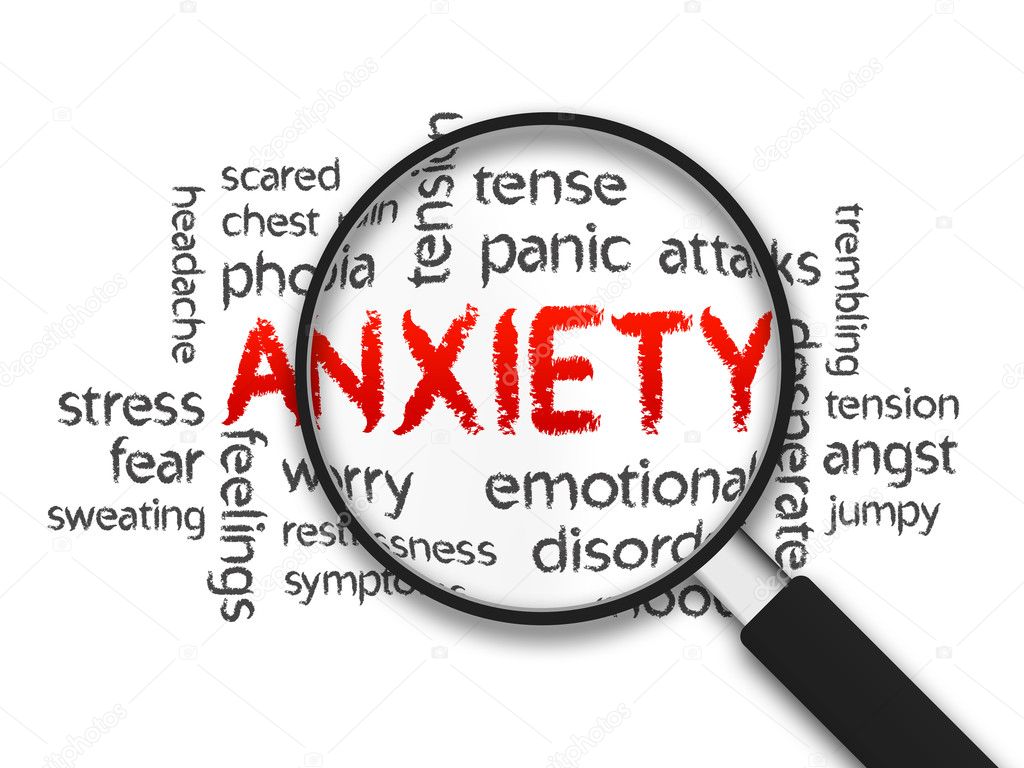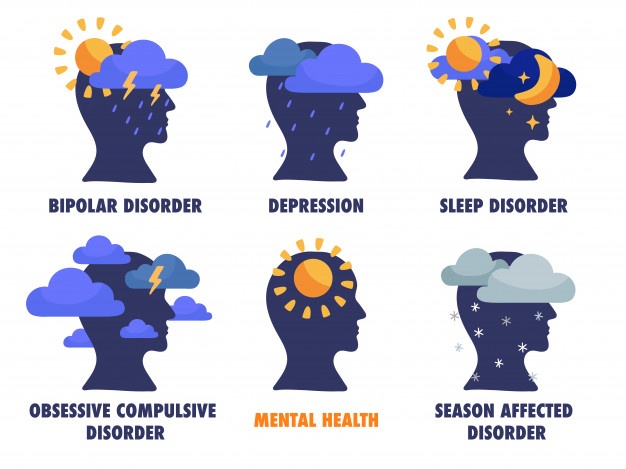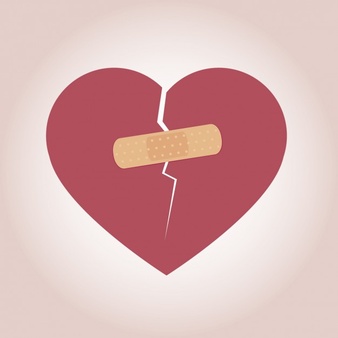Table of Contents
If you are suffering from Borderline Personality Disorder (BPD), it will be difficult for you to find standard treatment plans. Treatment plans for many people with borderline disorder will be individualized because some of these individuals have only one illness. Most people with borderline have other disorders, known as comorbidities. Physical and psychiatric comorbidities are more common in people with borderline personality disorder.
In this article, you will get to know about what comorbidity is and its types.
What is Comorbidity?
Comorbidity is when a person is suffering from more than one disorder. The most common comorbidities that occur with Borderline Personality Disorder (BPD) are anxiety, depression, and post-traumatic stress disorder. A person who is suffering with Borderline and depression will be referred to as having comorbid depression and BPD.
While, according to the definition, comorbid disorder must exist at the same time, it can be the case that one of the disorder or condition may have started before the other. For instance, someone can develop PTSD in childhood, and BPD in adolescent. Or, both disorders can develop at the same time.
For as long as the symptoms of both disorders overlap, they will be considered as comorbidity.

Having Comorbidities can be problematic because:
Yes, it can be problematic if you have comorbidity, specifically if you have Borderline. Other illness like depression or anxiety are easily recognized and are regularly treated. Many people cannot appropriately diagnose Borderline because the other disorders like depression can hide the Borderline symptoms. Which means that the personality disorder symptoms go unprocessed and abandoned.
Depression and anxiety can be treated with medication, but there is no medication currently proven by the food and drug administration that can treat Borderline Personality Disorder (BPD). There are many different medications that are usually used without the approval of FDA to treat Borderline disorder.
Types of comorbidities of Borderline Personality Disorder (BPD)
There are 6 main comorbidities that are linked with Borderline Personality Disorder (BPD).
-
Borderline Personality Disorder (BPD) vs Psychosis.
-
Borderline Personality Disorder (BPD) vs Anxiety.
-
Borderline Personality Disorder (BPD) vs Depression.
-
Borderline Personality Disorder (BPD) vs Anger.
-
Borderline Personality Disorder (BPD) vs OCD.
-
Borderline Personality Disorder (BPD) vs Narcissistic.
Borderline Personality Disorder (BPD) vs Psychosis:
When Borderline personalities feel stressed then they can develop Psychotic like symptoms. They experience a contortion of their perceptions or beliefs instead of a clear break with reality. Specifically, in close relationships, they tend to misconceive or magnify what other people think about them.
Psychotic symptoms, specifically hallucination, is an important feature of Borderline Disorder. As the name of disorder shows that it was originally introduced to describe patients who are on the border between neurosis and psychosis. Psychotic symptoms have always been considered as an important feature od Borderline Personality Disorder (BPD).

Psychotic symptoms in patients suffering with Borderline Disorder can be divided into intuitive abnormalities and paranoid ideation but there is currently no consent on the phenomenology and seriousness of these experiences. Clinical concepts and recent diagnostic systems are failing to provide a framework for understanding these phenomena. This is a major hurdle on the way to valid definitions. Therefore, the criteria do not account for other usual symptoms like hallucinations or long-lasting paranoid episodes.
Many studies have compared the generality and quality of psychotic symptoms in patients suffering with Borderline Personality Disorder. The researchers found greater agony and more negative content in patients suffering with Borderline Personality Disorder (BPD) alone as compared with another groups.
Psychotic symptoms in relation with Comorbid disorder:
Comorbid psychotic disorder can be an obvious explanation for long lasting psychotic episodes in patients suffering with Borderline Personality Disorder (BPD). Most clinical studies among population of patients suffering with Borderline Personality Disorder (BPD) either precisely excluded patients with psychotic disorder or did not provide any information on this comorbidity in making conclusion about potential relationships with psychotic symptoms difficult.
Childhood Trauma and Psychotic Disorder:
Research shows that childhood trauma plays an important role in the development of Psychotic symptoms. It is reported that sexual and physical abuse in childhood significantly related to hallucinations not only in psychotic patients but also in nonpsychotic people from the community. Childhood trauma is highly extensive in patients with Borderline Disorder.

Childhood emotional abuse is another ty of trauma with a high risk of psychopathology later in life. Individuals with Borderline experience different types of childhood trauma and the symptoms of psychotic exist in patients with Borderline Personality as in other groups.
In patients of Borderline disorder, psychotic symptoms usually occur in the reaction of stressful events. Their happening might therefore be diminished by further outcomes of childhood trauma, high sensitivity to stress and symptoms of PTSD. PTSD is 58-79% present in the patients of Borderline disorder, and the disorder itself can include psychotic symptoms
Borderline Personality Disorder (BPD) and Anxiety:

Anxiety and panic attack symptoms are common in people suffering with Borderline Personality Disorder (BPD). People who have Borderline, 90% chances are to get anxiety attacks. If you are suffering with Borderline Disorder, you can experience heightened levels of anxiety and panic attacks especially when you are stressed.
If you have Borderline disorder, you have extreme fear of abandonment and instability, you also may have difficulty tolerating being alone.
Anxiety disorder is a group of illness in which extreme fear and worry is persistent and feels uncontrollable Panic disorder is a situation in which person experiences panic attacks that comes out of nowhere and cause the person to be fearful that they will return.
When you think about Borderline Personality Disorder (BPD), the chances are common to get these crisis states where they feel overwhelmed by their emotions and sometimes are not really sure about what to do to regulate themselves.
Borderline Personality Disorder (BPD) and Depression:
Borderline Personality Disorder (BPD) is a mental health disorder that effects the way you think about others and about your own self, and causing problems in everyday life. Many people suffering with Borderline Personality Disorder (BPD) can experience depression. In fact, it is so rare that Borderline Personality Disorder (BPD) and depression do not occur at same time.
But what is new and unique about depression in Borderline Personality Disorder (BPD)?

The term depression is a common diagnosis. Depression is more than normal sadness. Many mental health disorders include elements of depression.
There is a very high rate of comorbidity between depression and Borderline disorder. Means that people who are suffering with Borderline must experience depression too.
Borderline Personality Disorder (BPD) is a serious mental illness distinguished by dysregulation of impulses, emotions and difficulties in interpersonal relationships.
The uncertainty of emotions and prevalence of negative affect and identify Borderline Personality Disorder (BPD) usually lead to problems, deciding whether the patient has major depression coinciding with Borderline or the depressive symptoms are part of the Borderline disorder itself.
It is known that the elements in the early environment including those elements that lead to self-conscious and pathological patterns of attachment. Many experts have noticed that depression usually presents in different ways in the patients of Borderline Personality Disorder (BPD). People suffering from Borderline Personality Disorder (BPD) usually describe feeling extremely bored, restless, and lonely when they feel depressed.
Depression is associated with feelings of sadness, guilt and deep shame. The research has shown that if a patient is suffering from both Borderline Personality Disorder (BPD) and depression is treated for Borderline and sees improvements in the symptoms.
Borderline Personality Disorder (BPD) and anger:
Many people with Borderline Personality Disorder (BPD) experience anger so intensely that it is often referred to as “borderline rage.”
The reason why Borderline anger known as inappropriate is because the level of anger seems to be more extreme than is warranted by the situation that triggered it. For instance, a person suffering with Borderline disorder can react to an event that may look small or unimportant to someone who is not suffering with Borderline, such as misunderstanding with very unhealthy expressions of anger that includes physical violence, sarcasm and yelling.

Experts now are trying to research that why it is different from normal anger and why it occurs. More specifically, they’re trying to understand whether people with borderline can easily get angered than people without Borderline Personality Disorder (BPD).
The study found that people with Borderline Disorder reported the same level of anger as the healthy controls.
It is important to remember that anger is a normal emotion, so it is not important that you are suffering from Borderline disorder if you experience angry reactions. But if you face difficulties in controlling anger, talk to your doctor. If you or your loved one I suffering from Borderline Personality Disorder (BPD), please seek out care from a therapist or any mental health professional.
Obsessive Compulsive Disorder (OCD) vs Borderline Personality Disorder (BPD):
In OCD, personality disorders are a common comorbidity. OCD and Obsessive-Compulsive Personality Disorder (OCPD) are similar in the presentation of their symptoms. Comorbid diagnoses in Obsessive-compulsive Disorder (OCD) are not rare. From all of the anxiety disorders, the risk of having one comorbid personality disorder is the highest for OCD.
Among all the personality disorder, Obsessive-compulsive Personality Disorder (OCPD) is the most commonly linked with OCD. People who are suffering with OCD commonly have more poor cognitive flexibility and excessive need to control which in result significant dysfunction in socio-occupational domains.
The recognizable symptoms of Obsessive-Compulsive Disorder (OCD) are:
- Pervasiveness.
- Poor insight and resistance.
- Obsessive control evident in personal relationship.
The symptoms including these features are located towards the extreme end of the symptomatic spectrum of Obsessive-Compulsive Disorder (OCD).

The occurrence of Borderline in comorbidity with OCD shows a noticeable difference in clinical picture. Patients suffering with Borderline Personality Disorder (BPD) have a decreasing level of insight into the absurdity related to their obsessive ideas. And they are unable to deal with their thoughts and do not understands the abnormality of their compulsive behaviors.
Narcissistic and Borderline Personality Disorder (BPD)
Narcissistic Personality Disorder (NPD) is a personality disorder that usually co-occurs with Borderline Personality Disorder (BPD).
Narcissistic Personality Disorder is distinguished by the existence of these symptoms:
- The person who is suffering from Narcissistic Personality Disorder believes that he or she is special and only special and high-status people can understand them.
- The take advantages of others.
- They behave in an arrogant way.
- They require excessive admiration.
- They lack empathy.
- They have an inflated sense of self-importance.

In short, people with NPD described as being very self-absorbed and egotistical. This self-absorption increases the level of a clinical disorder because it remarkably interferes with relationships, occupation and other important domains in life. Experts believes that this egoistical style is the Narcissistic Personality Disorder (NPD) individual’s attempt to deal with poor sense of self-worth.
Some people believe that there is some intersection point between Narcissistic Personality Disorder (NPD) and Borderline Personality Symptoms. Such as: impulsivity and destructive behaviors. Dialectical Behavior Therapy (DPT) is a treatment designed for Borderline can also work for NPD.

There is no cure for Borderline Personality Disorder (BPD) and no matter how successful treatment can be, the risk of Borderline symptoms can return and cannot be ignored. Results of every individual can be different; some responds better than others. But for the most part, Borderline disorder can be treated in the same way as diabetes and other chronic treatments. The disorder might not go away but it can be managed in a way that provides you a better quality of life.






